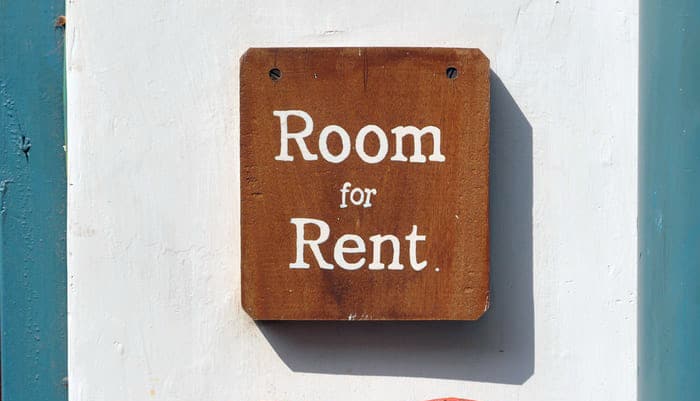Allocating resources between tenant based and project based rental assistance
Many cities, towns, and counties focus their efforts primarily on preserving and creating dedicated affordable housing units. Far fewer resources are allocated to expanding the availability of tenant-based rental assistance, which enables households to affordably rent units of their choosing on the private market.

In part, this tendency reflects the high cost of providing this type of ongoing rental assistance, particularly if it’s offered to eligible households on a non-time-limited basis. In addition, the federal government already has a large tenant-based rental assistance program – the Housing Choice VoucherOfficially known as “Section 8 Housing Choice Voucher”. It is the largest and most sought after housing program in America. Section 8 HCVs are managed by various public housing agencies (most commonly referred to as housing authorities), which falls under the supervision of HUD. Program participants typically pay 30% of the rent, and the rest is covered by the HCV. program – which is administered by public housingA federal program dedicated to providing decent and safe rental housing for low-income families, older adults, and persons with disabilities. There are around 1.2 million houesholds residing in public housing units, managed by over 3,000 housing authorities. Programs differ in types and sizes. agencies (PHAs) that are often distinct entities from city government. However, the Housing Choice Voucher program serves only a small share of those who need assistance. Two HUD programs — the HOME Investment Partnerships Program and the Housing Opportunities for Persons with AIDS program – provide municipalities with the option of using funds for tenant-based rental assistance. Local jurisdictions that choose to use these federal resources (or allocate locally-generated resources) to create or expand a tenant-based rental assistance program can supplement the Housing Choice Voucher program and serve more households. This brief outlines several points that may be helpful for cities or counties to consider as they decide whether to create or expand a local tenant-based assistance program.
Tenant-based assistance offers flexibility but may preclude some locations
Project-based assistance is less flexible but can provide neighborhood stability and access
Both project-based and tenant-based assistance can be targeted to special populations
Other factors for cities, towns, and counties to consider when deciding how to balance tenant-based and project-based rental assistance include:
- Cities and towns have a choice of many competing uses when allocating their HOME program funds and other local funds. For example, HOME funds can be used to fill in the gap between the costs of developing a new LIHTC development and the funds available from LIHTC equity and supportable debt. Local jurisdictions that choose to spend HOME funds on tenant-based rental assistance may thus end up leveraging less LIHTC equity. This is not necessarily a reason not to engage in tenant-based rental assistance but simply an acknowledgement of the importance of weighing the trade-offs.
- When an affordable housing development that has fallen into disrepair is located in a resource- poor neighborhood with a high crime rate, it may be possible to convert the existing subsidy to some combination of tenant-based rental assistance and scattered-site project-based assistance in which project-based rental subsidies are transferred to another location.
- In addition to considering whether and to what extent to invest local funds in tenant-based rental assistance, it is important for cities, towns, and counties to consider whether existing federal tenant-based resources can be used more effectively. PHAs have flexibility in how they administer the federal Housing Choice Voucher program, including provisions that expand the reach of the program in higher-cost areas. For example, PHAs can increase the Voucher Payment Standard, which determines the maximum amount of assistance the PHA will provide towards a household’s monthly rent, to up to 110 percent of the fair market rent (FMR), or 120 percent with HUD approval. A higher payment standard means more voucher holders will be able to afford to rent units in higher-cost neighborhoods. PHAs can also opt to use “small area” FMRs, in which higher payment standards are adopted for targeted high-cost neighborhoods while lower payment standards are applied to low-cost neighborhoods. This flexibility could be helpful in expanding housing opportunities in resource-rich areas.
PHAs enrolled in the Moving to Work program have additional flexibility to adjust payment standards beyond the 120 percent threshold. These PHAs can also waive limitations on the share of income that voucher holders spend on rent at lease-up (ordinarily up to 40 percent of adjusted income). Lifting the income cap for initial rent may result in higher initial rent burdens, but this practice also enables voucher holders to rent units in higher-cost areas that may provide greater opportunity.
[1] The substantial expense of providing both tenant-based and project-based rental assistance on a long-term indefinite basis, however, often deters cities from offering either type.
[2] Gubits, Daniel et al. Family Options Study: 3-Year Impacts of Housing and Services Interventions for Homeless Families. October 2016, U.S. Department of Housing and Urban Development.
[3] Research on supportive housing developments in New York City finds that five years after completion, properties near supportive housing developments appreciate more than comparable properties in the same neighborhood but farther away (Armstrong, Amy, Vicki Been, Ingrid Gould Ellen, Michael Gedal, and Ioan Voicu. The Impact of Supportive Housing on Surrounding Neighborhoods: Evidence from New York City. November 2008, Furman Center for Urban Policy, New York University). See also Stardust Center for Affordable Homes and the Family. How Does Affordable Housing Affect Surrounding Property Values? Research Brief No. 1: Property Values. August 2008, and Diamond, Rebecca and Timothy James McQuade. Who Wants Affordable Housing in their Backyard? An Equilibrium Analysis of Low Income Property Development. July 2015, Stanford Graduate School of Business Working paper No. 3329.